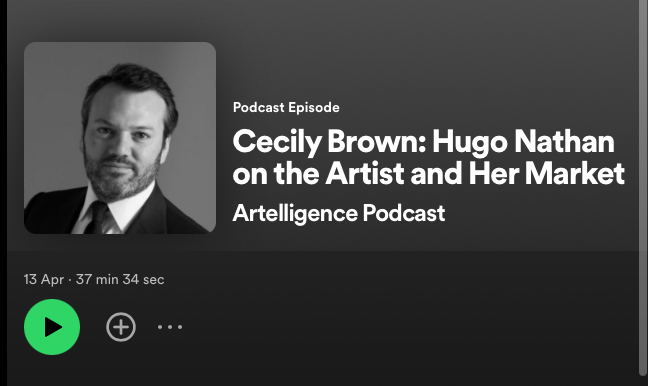Newsletter November 2015: Kazuo Shiraga
October 29, 2015

Kazuo Shiraga 1924-2008
Kazuo Shiraga was a Japanese performance artist and painter, and key member of the avant-garde Gutai Group, which formed in the mid-1950’s. In 1954, Shiraga made a seminal performance, suspending himself by rope above a canvas, and painting with his feet. This soon became his established mode of expression, and he continued to paint with his feet throughout his career.
The Art Association of Gutai was formed in 1954, and represented a revolution in artistic practice. Much of the performance and conceptual art of later decades owes its roots to these pioneers, who developed new methods to create abstraction. Gutai is often translated as “embodiment”, and the group celebrated the combination of human action and materials, revering the act of creativity above the end product.
The Work
Often bright in colour, Shiraga’s paintings clearly reveal the forceful action of paint application. The thick, unmixed paint creates a rich texture on the canvas, and the immediacy of the creative process is clearly evident in the end result. In the way that the process of painting is so obvious in the end result, it is easy to draw a comparison with the splashed paint of Jackson Pollock’s “Action Paintings” or the slashed canvas of Lucio Fontana’s Concetto Spaziale series.
Shiraga’s earliest paintings date to the mid 1950’s, but he continued to paint in this style well beyond the break up of the Gutai group in 1972. In fact, he was still making these paintings until the last years of his life, and with great success. Unlike so many artists, Shiraga produced masterpieces in every decade of his career. There is no complete catalogue of Shiraga’s work, and it remains unclear how few paintings he produced in his 50 year career. Estimates have ranged from 300 and 800, which would be a very small body of work- although this does not account for the performances which constituted a good deal of his artistic output.
The Market
The Gutai phenomenon has been a recent, but meteoric feature of the art market. With his large, colourful canvasses still in relatively good supply, Shiraga has become the market leader of the group, with strong prices at auction and 3 major gallery exhibitions in New York this year alone. It was not always so, and indeed the American appreciation of his work, and the Gutai movement as a whole, is a very recent development. Shiraga was first represented by Parisian dealer Rodolphe Stadler in the 1960’s, and has long enjoyed a loyal European following. However, it was Belgian dealer Axel Vervoordt who pushed the work to international prominence. Following the Parisian retrospective of Shiraga’s work in 2002, Vervoordt has continually presented work by the artist at art fairs. New York dealer Fergus McCaffrey now represents the estate, and has done much to promote Gutai in America
Shiraga’s prices have risen more than tenfold in the past decade, and the current auction record stands at over $5.3m, achieved in June 2014 for Gekidu Suru Aka from 1969. Earlier works tend to command the highest prices, although the rich coloration and large scale of the later works has fuelled a surge in interest. Shiraga’s work also featured prominently at the Frieze Masters fair in London earlier this month, and attracted considerable interest. Despite the boom in prices, Shiraga’s market looks set to continue on this trajectory, buoyed by the fact that one can still buy works of the highest caliber, by one of the most important Japanese artists of the 20th century.
If you would like more information on buying and selling work by Kazuo Shiraga, please contact us at:

